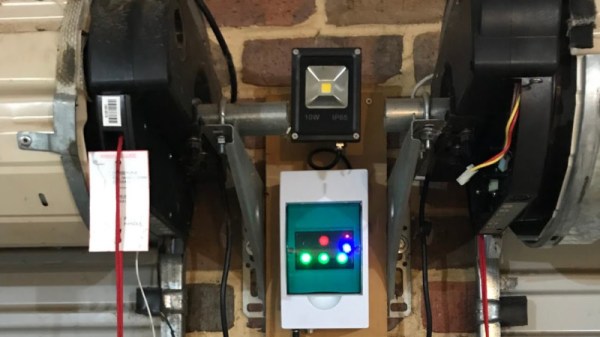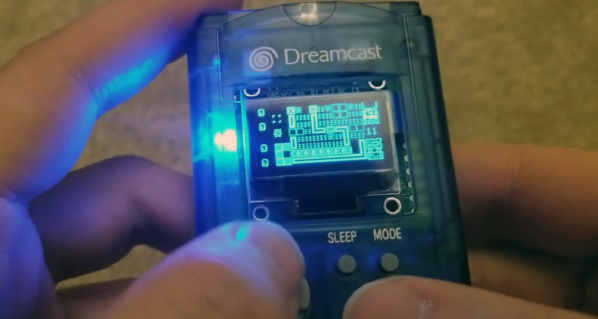The Arduboy is a tiny, credit-card sized sized video game console that you can build yourself. The Dreamcast VMU was also a tiny, pocketable video game system, but really that’s just where we stored our saves for Crazy Taxi. What do you get when you combine the two? [sjm] did just that, giving us an Arduboy tucked into a Dreamcast VMU.
The guts of the Arduboy is simply an ATMega32u4, the same chip found in many Arduinos, an I2C OLED, and a few other various electronics for USB, power, and battery protection. In short, it’s an easy circuit, and something just about anyone with the skills can build themselves. Since just anyone can get a PCB fabbed, and the Dreamcast already has nice silicone buttons built into the enclosure, it was a simple matter for [sjm] to create a Dreamcast VMU-shaped PCB with all the guts of an Arduboy. The only real difference is the size of the OLED — this one uses a 0.96″ 128×64 OLED, where the original used one with the same resolution but with a significantly larger size.
Yes, we’ve seen this same project before, but now thanks to the magic of the Hackaday Prize, it’s now in the running for the greatest hardware competition on the planet. You can check out the entire build video and a short demo after the break. Of course, this isn’t the first repurposing of the Arduboy circuit, we’ve seen a flex circuit version, and a version with a crank like the Playdate developed by Teenage Engineering and Panic.
Continue reading “Arduboy In A Dreamcast VMU” →




















